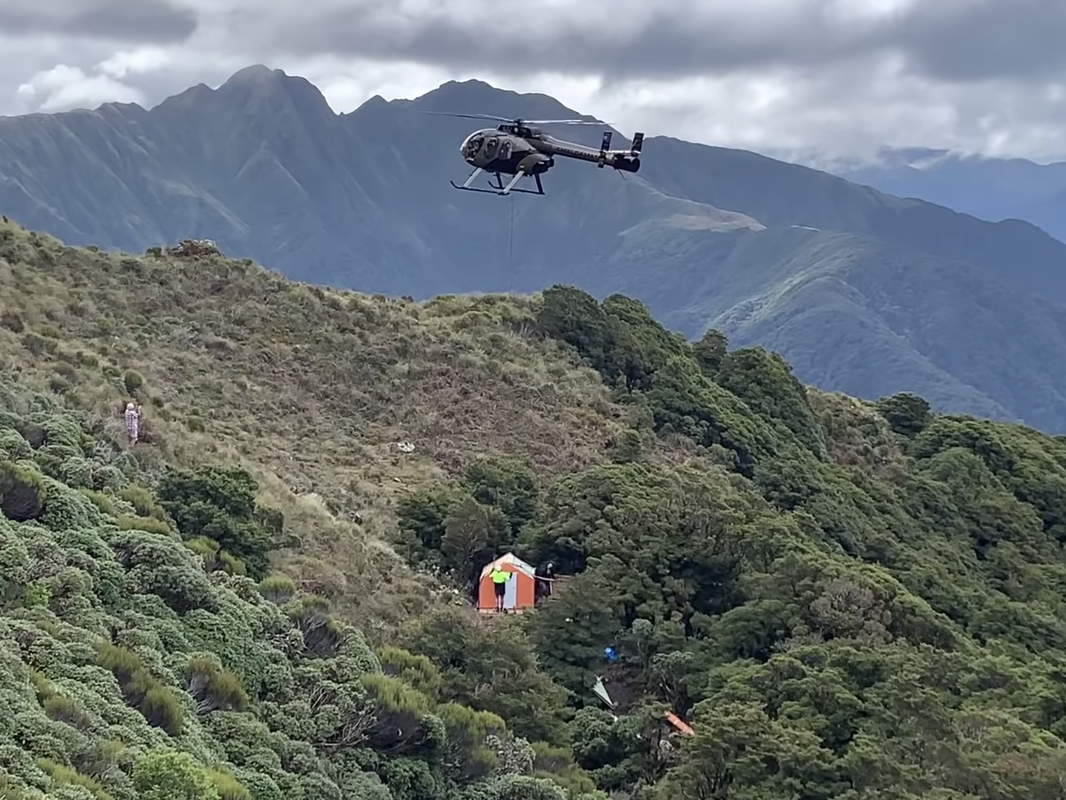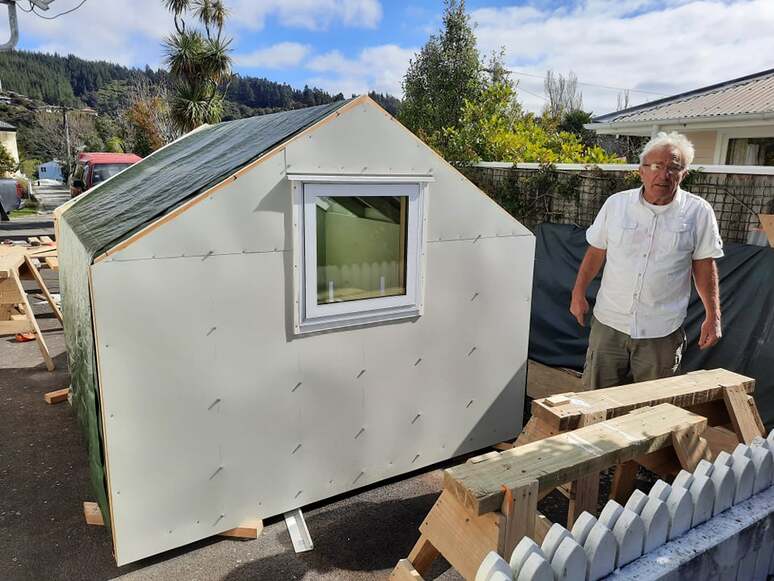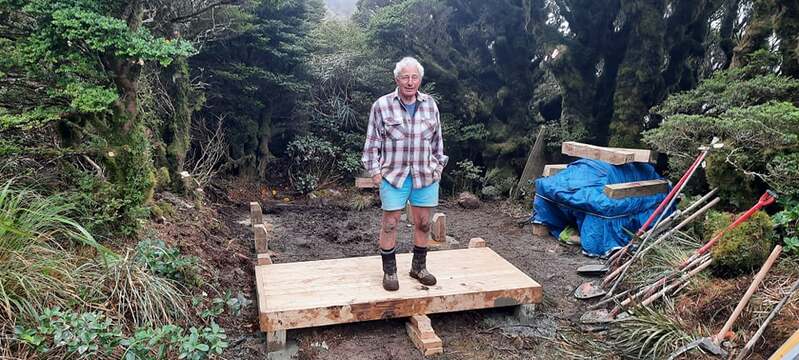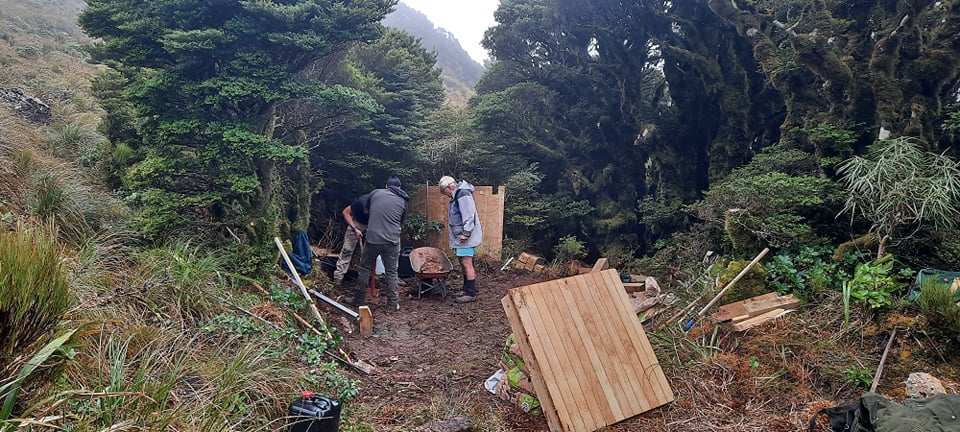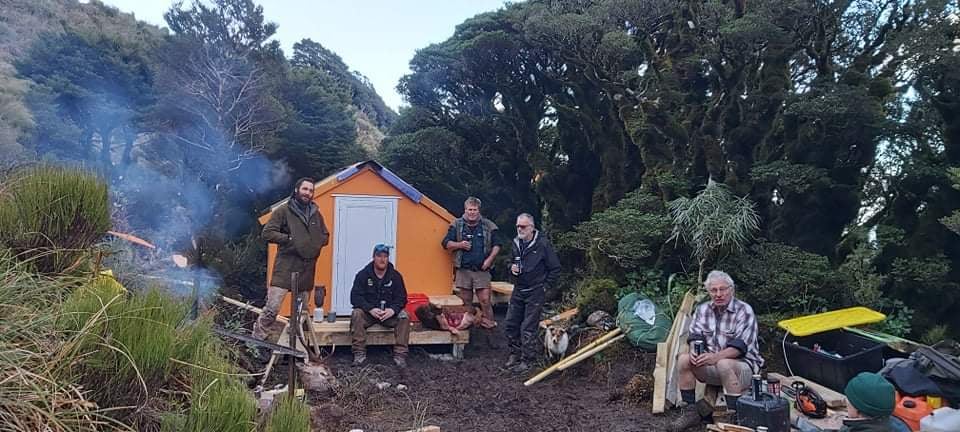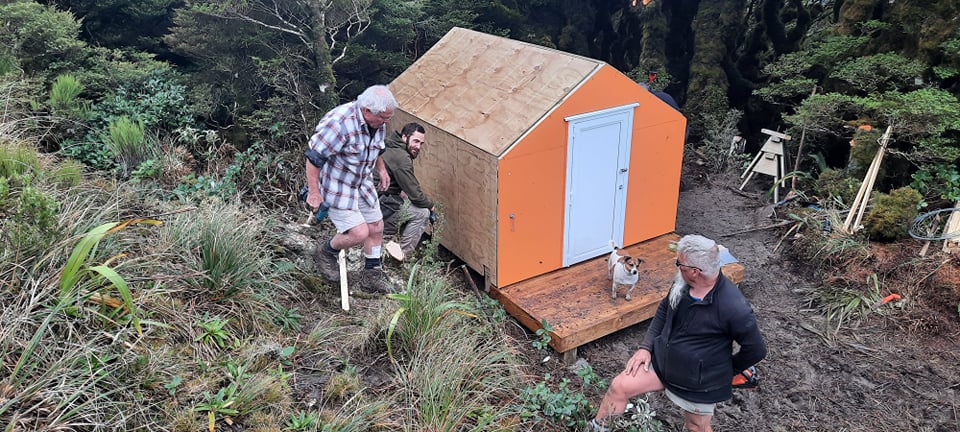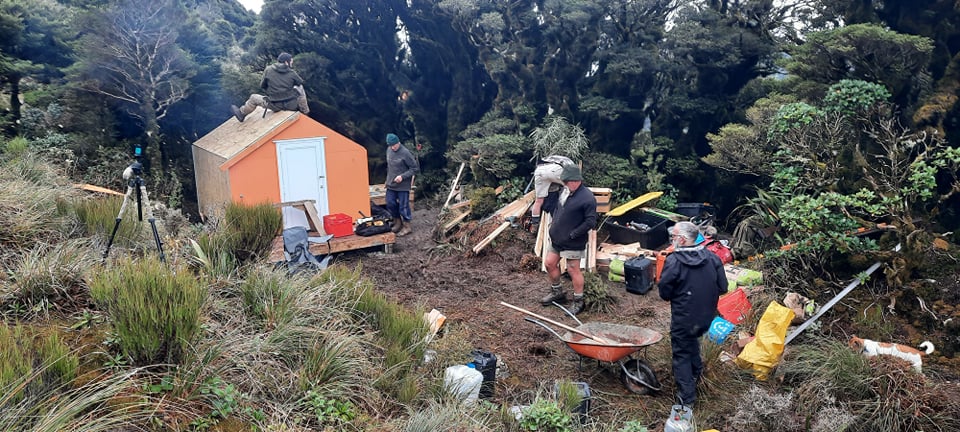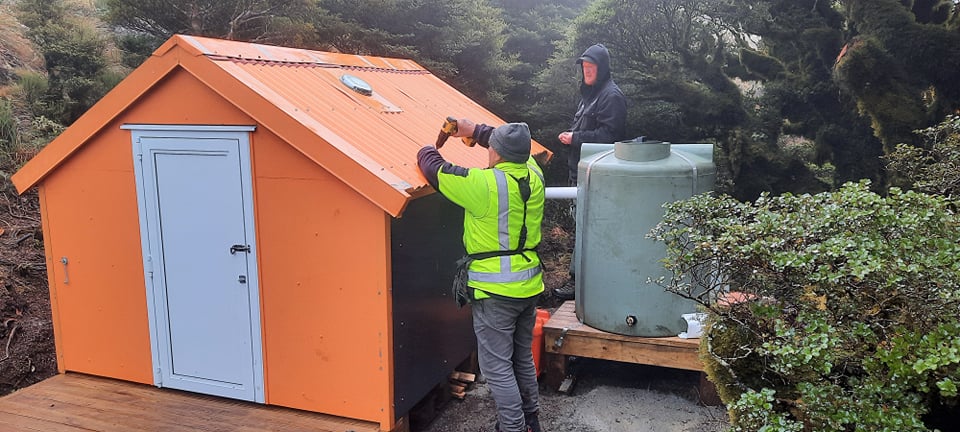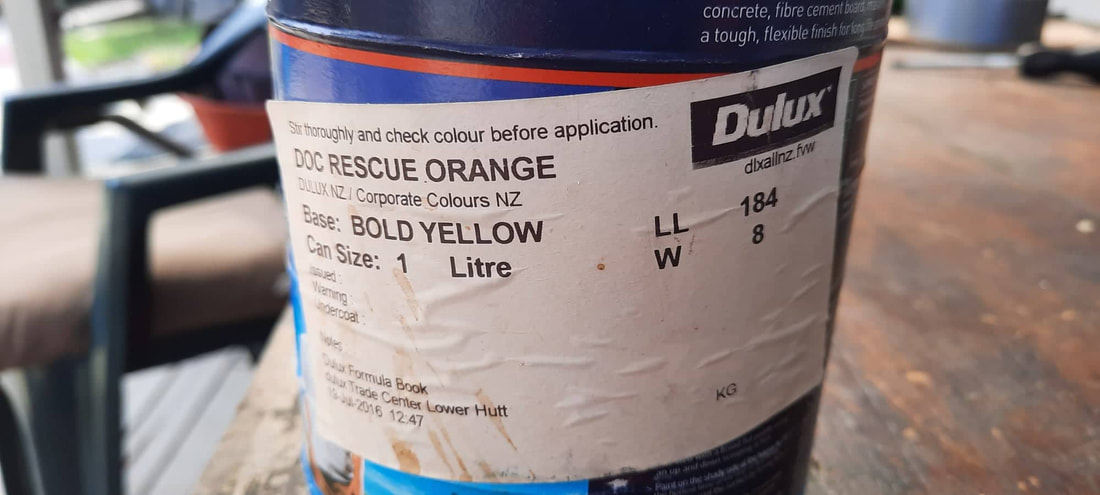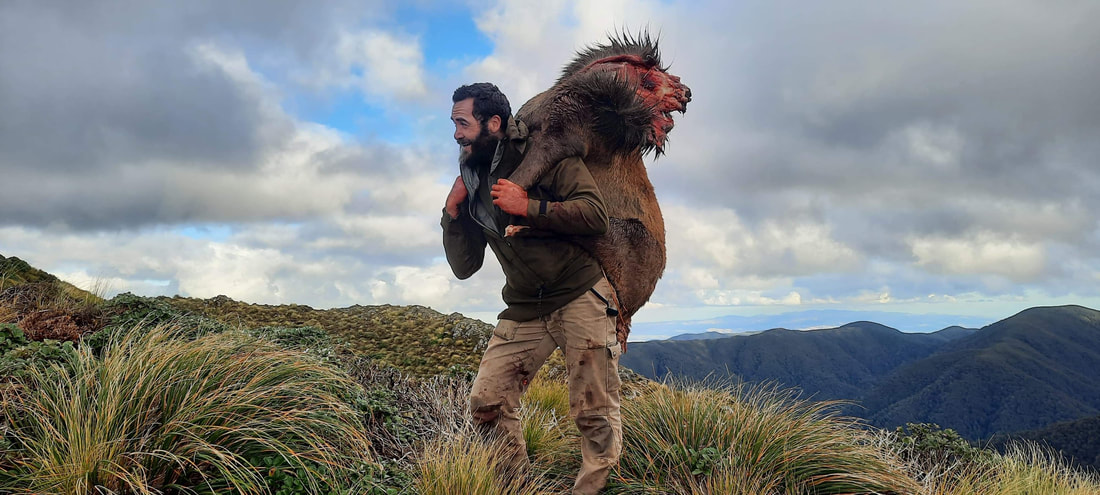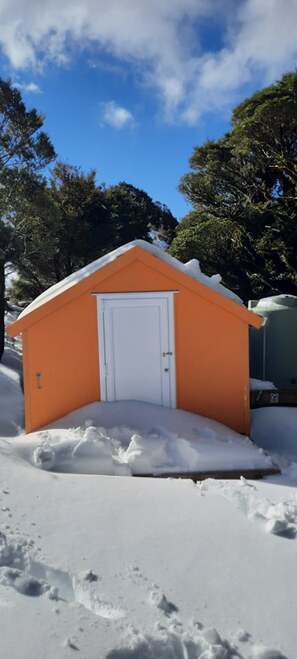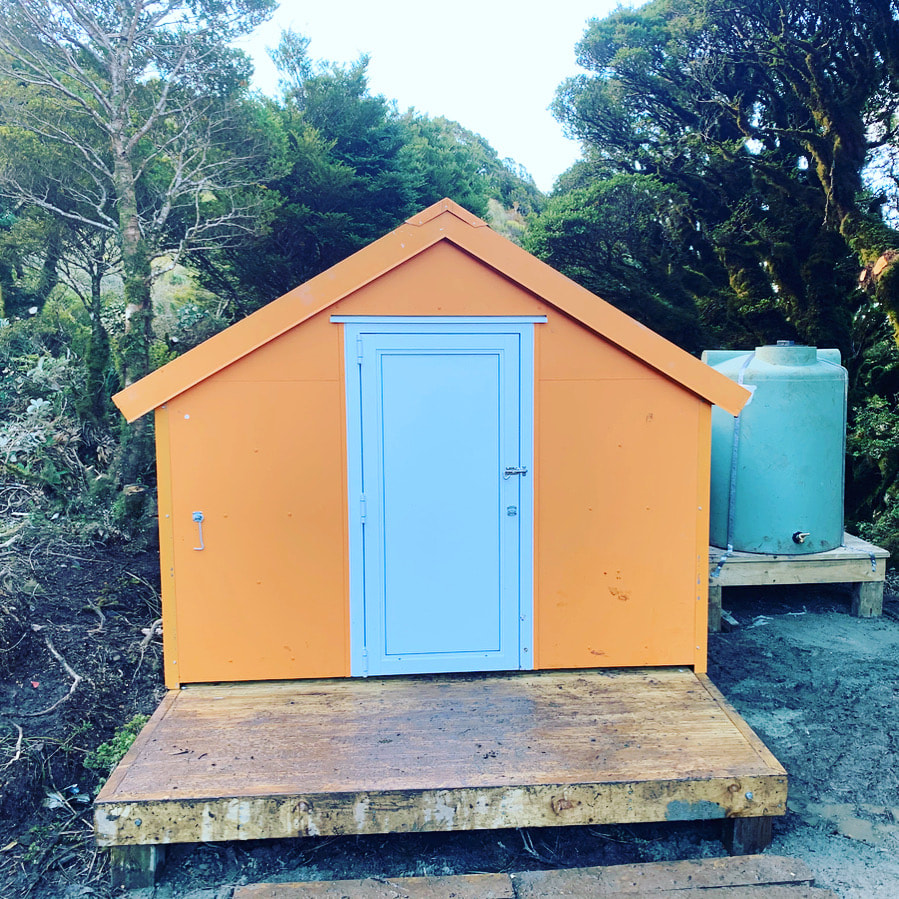|
Tararua Forest Park, Wairarapa – May 2021 At long last, there is once again a bivouac on the Tararua Ranges’ Neill-Winchcombe Biv – the third on site. If it were not for the original Winchcombe Biv, Geoff Spearpoint may well have perished on a wintry Neill-Winchcombe Ridge when he was just a teenager, back in the 1960s. Spearpoint and his schoolmate retreated back to the biv, exhausted and beaten by the weather, and most likely would have succumbed to hypothermia if were not for the shelter of the small dog-box bivouac. This was the first Winchcombe Biv, erected by the Forest Service for use by its deer cullers during the 1960s. During the mid-1980s, this dog-box (Winchcombe Biv I) was replaced by a small stand-up two-person hut: Winchcombe Biv II. However, it didn’t last long; by the 1990s it had been removed as part of a rationalisation of huts within the Tararua Range. So it’s with a nice sense of full-circle that in his role on the Backcountry Trust Board, nearly 60 years later, Spearpoint could approve funding for Winchcombe Biv III. For John McCann, the man who spent seven years orchestrating the return of Winchcombe Biv, there was also a palpable sense of full-circle. McCann was one of several Forest Service deer cullers who operated in the Tararua Range during the 1970s and 1980s, and for many years the area’s huts and bivouacs were his home. After the Forest Service disbanded in 1987, McCann became a sandal-wearing DOC ranger based in Masterton. It was McCann who was responsible for removing Winchcombe Biv II in the 1990s. At this time of facility rationalisation, the bivvy was deemed surplus to requirements. Although McCann followed orders to remove the bivouac, he was never happy about it. ‘A lot of us guys were dead against it,’ he recalls. The exposed and long Neill-Winchombe has seen a number of fatalities and other near-misses over the years, so McCann felt having a bivouac there was important – not just for the shelter, but as a water source too. Over the years, McCann slowly watched shelters like Winchcombe Biv and other huts built by the Forest Service removed, modified or go into decline, and he wanted to do something about it. After he retired, he gathered a group of former cullers, who call themselves exNZFS, and set about systematically restoring and maintaining these one-time culling huts. ‘It’s important to me,’ says McCann ‘to preserve the historical integrity of the huts as much as possible.’ His exNZFS group now looks after 12 huts and bivs in the Tararua Range, two in the Remutaka Range, and another two in the Aorangi Range, meaning McCann may well be the individual who has signed the most ‘maintain by community’ agreements in the entire country (but – he says – completed the least hands-on physical work). However, getting Winchcombe Biv III over the line took seven years of effort, with more than a few hurdles along the way. ‘Just as well I’m stubborn,’ he says. Happily, McCann was supported by a good team, including fellow ex-culler Paul Gush. Gush himself built several original NZFS huts in the Tararua Range back in the day, including Penn Creek, Angle Knob and Arete Bivvy. Once, Gush had to drag two hypothermic trampers to the shelter of Winchcombe Biv, which undoubtedly saved their lives. For that reason, he too felt the bivvy’s loss. After McCann gained permission from DOC to install Winchcombe Biv III, Gush set about prefabricating most of it – during the 2020 Covid Lockdown. Then there was some complicated red tape to get building permissions from local councils. Huge thanks to engineer Grant Stevens, who volunteered his professional skills to make the calculations necessary for this high wind zone site, and to Bruce Dowrick of Red Gecko in Wanaka who does a lot of the Backcountry Trust hut design work. Stage one saw a team of five – John McCann, Paul Gush, Sandy Allen, Josh Murray and Hitiri Turner – on site, digging holes, positioning piles and pouring concrete for the foundations. Stage two saw a second team fly in with the biv on a strop, and positioning it onto the foundations. This time the team included Mike Wilkinson, Josh Murray, John McCann, Paul Gush, Grant Timlin, Sandy Allen and Greg Barber. McCann says builder and keen hunter Mike Wilkinson was ‘hugely important’, as he managed the paper work and consents, as well as supplying one of his own builders. As it was Gush’s 75th birthday, it was turning into quite an auspicious occasion. While the prefabrication saved considerable work, it still took a full two days to complete most of the remaining jobs. This included affixing the roof, installing the water-tank and guttering, lining the hut with ply, and securing the flat iron cladding. McCann’s dog Tama supervised proceedings. Winchcombe Bivvy III is painted bright NZFS orange, as befits such a structure, and is clearly visible from the ridge above. ‘It’s a long way from nowhere up there,’ McCann says, ‘and a few people have come to grief over the years, so the new bivvy is going to be important for saving lives.’ McCann will return this summer to tidy up a few more jobs, including some painting touch-ups, installing a thunder-box toilet, and a few flashing fix-ups. ‘It’s been a massive project,’ he says. ‘But hugely satisfying.’ Josh Murray (who had last year been involved in building the new Toka Biv in the Ruahine Range) made a neat wee film about the Winchcombe Biv III build, which you can view at: https://www.youtube.com/watch?v=w7TBR907qp4 In it, Murray recites a poem McCann penned to mark the team’s achievement: They said it couldn’t be done, to build a new bivvy. He’d been in town too long, And he was just a civvy. He stood on a log, And roared for his troops ‘We’re heading for the bush boys, So lace up your boots’ The powers that be, Thought they’d spoil his fun, They couldn’t be any tougher But they’d never been up against a grizzled Tararua hunter. Helicopters flew, hammering and sawing, Dogs barked, even rifle shots were heard. By the end of the day, There it stood, Winchcombe, the third. John McCann concludes, ‘You can all come up now and enjoy the place!’
Comments are closed.
|
Projects
June 2023
|

